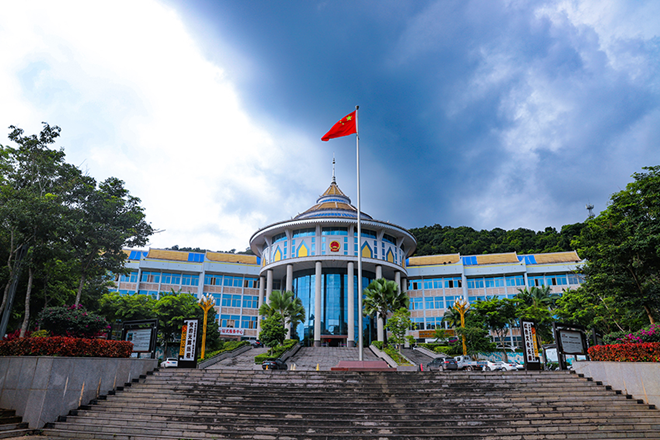
Mohan town, once a far-flung town in Southwest China’s Yunnan province bordering Laos, is taking on a new profile as a booming international land port.
Since the China-Laos Railway was put into operation in December 2021, it has seen rapid development buoyed by increasingly smooth logistics.
The 1,035-kilometer line that runs between Kunming, the capital city of Yunnan, and Vientiane, the capital of Laos, leaves China via Mohan port.
Located at the two ends of the China-Laos Railway in China, Mohan and Kunming are closely connected by the international railway.
In May 2022, Mohan was put under trusteeship of the provincial capital in the hope of shaping the border town into an international port and a highland of investment and international cooperation.
The annual conference of the China-Laos Mohan-Boten Economic Cooperation Zone was held on March 12, briefing on the development of Mohan as an international port city since it fell under Kunming’s jurisdiction.
In 2023, fixed asset investment in the zone increased by 370.4 percent and local general public budget revenue increased by 124.87 percent. The zone saw $10 billion foreign investment in actual use.
The total amount of import and export goods at Mohan Port exceeded 8 million tons, an increase of 44.34 percent, and the number of inbound and outbound people exceeded 1.5 million, an increase of 392 percent. Mohan Port has also become the first railway port of China to the ASEAN.
With more people, goods and materials increasingly flowing into Mohan, its border communities trade has surged 42.56 percent year-on-year.
The China-Laos Railway launched cross-border passenger trains from Kunming, capital of southwest China's Yunnan province, to the Laotian capital of Vientiane. The Shanghai-Kunming Lancang-Mekong Express was also inaugurated.
With cross-border logistics now more convenient, the time spent on the inspection and release of freight vehicles at the road port decreased from 10 minutes to 4, and the time for customs clearance at the railway port shrank from 40 hours to 5, with the traffic efficiency at the port markedly increasing.
Mohan Port plans to broaden its coverage of cross-border trade and expand its role as a designated import port for medicinal materials; it will build itself into an international collection center integrating spot trading, cross-border e-commerce, warehousing and logistics to attract goods from countries on the Indochina Peninsula.
This year, the Mohan-Boten Cooperation Zone will make every effort to promote the upgrading and transformation of its border communities trade. Specific measures include steadily increasing the variety of commodities traded among border communities, expanding trade with more countries, and enriching transaction content.
They also encompass gradually incorporating the commodities of the ten ASEAN countries into the scope of border community trade, upgrading the scale of border community trade, and turning Mohan Port into a regional wholesale and retail distribution centre for tropical fruits imported from Southeast Asian countries such as Laos and Thailand.